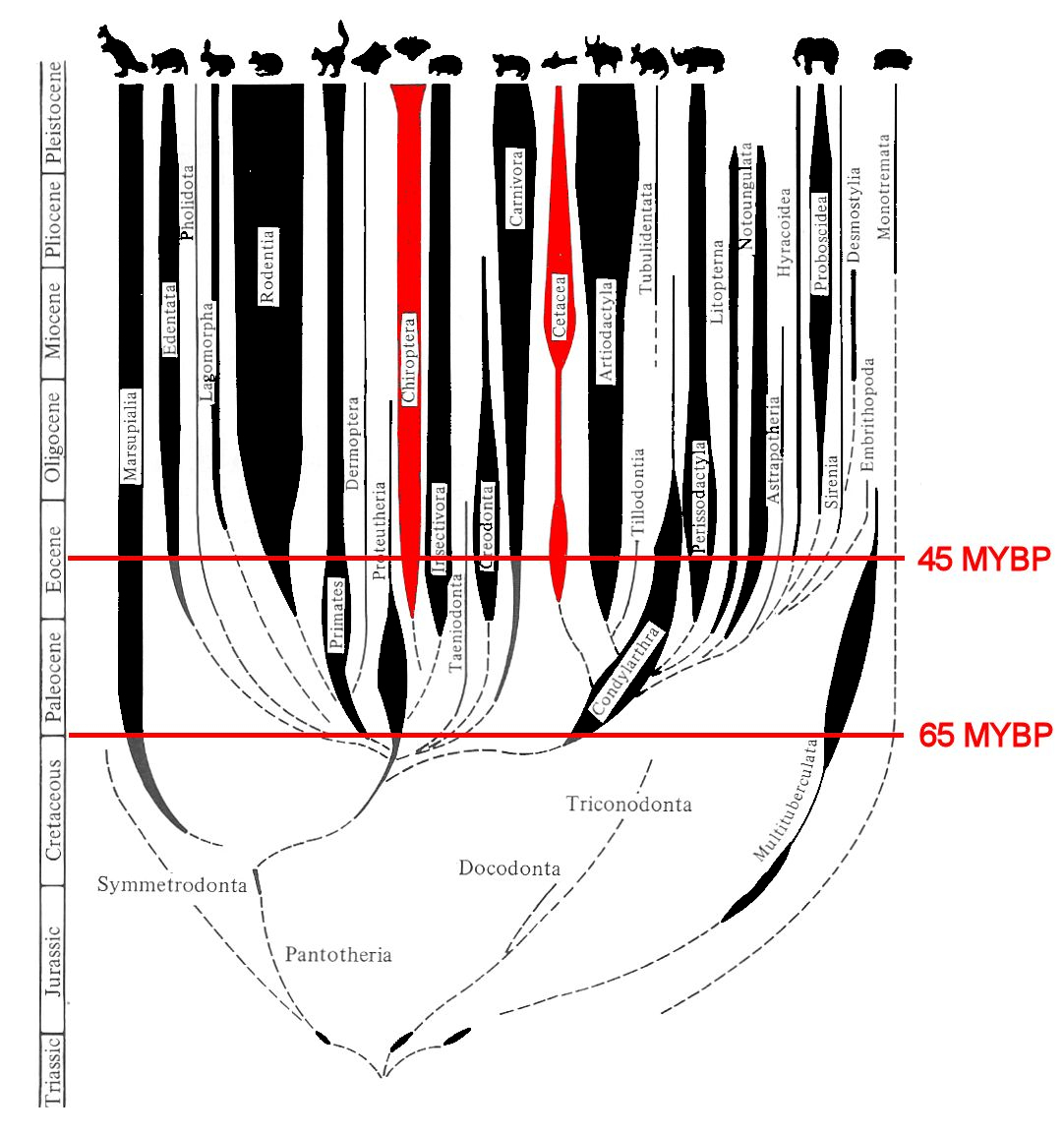
Adaptive Radiation of Mammalian Orders

At the end of the
Cretaceous period 65 MYBP
[Million Years Before Present],
only two lineages of Eutherian mammals
were present: insectivorous Protoeutheria
and hoofed Condylarthra.
Non-eutherian Marsupialia [far left] and Monotremata
[far right] were present, as well as Multituberculata,
a formerly successful but now-extinct group superficially
resembling rodents or shrews (until you look in their mouths!).
Following the disappearance of terrestrial dinosaurs as the predominant terrestrial fauna at the K/T [Cretaceous / Tertiary ] boundary, there was a rapid evolution of new mammalian types. By the middle of the Eocene epoch (45 MYBP), most of the twenty or so present-day mammalian orders are identifiable, including forms as diverse as Chiroptera [bats] descended from Protoeutheria and Cetacea [whales] descended from Condylarthra. This rapid evolution of morphological and ecological diversity, often into niches created by the extinction of a previous group, is an example of an adaptive radiation.
Figure after ©1966 by AS Romer; Text material ©2025 by Steven M. Carr